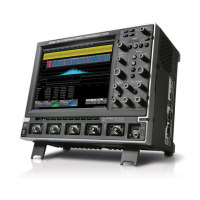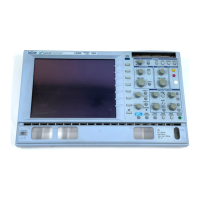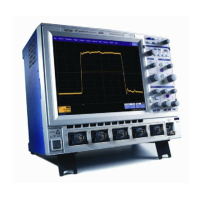X-Stream Operator’s Manual
WM-OM-E Rev I 409
where Corr
i
is the i
th
sample point (starting from 0) of the correlation waveform, wave1
j
is the j
th
sample of the first waveform, wave2 is the second input waveform (wave1 in an auto-correlation),
and
is a section of a waveform from sample a to sample b. The upper bound N in the
summations determines the length (length is N+1 sample points, since the first sample is point 0) of
the waveform sections on which the correlation calculation is performed. The divisor in the
correlation function:
normalizes the correlation calculation to +/-1, while the
term in the dividend removes any effect due to DC offset of the input waveforms in the correlation
function.
Essentially, the correlation waveform function takes a section of the first waveform and calculates
how it correlates with an equal-length section of a second waveform, using different starting points
in the second waveform. This can be visualized as taking a section of waveform 1, sliding it over
waveform 2, and calculating the correlation value for the area that overlaps. The bounds of the
starting point are from the beginning of the second waveform to its length, minus the section length.
At the upper bound, the end of the first waveform section lies at the last sample point of the second
waveform. Because the length of waveforms in the DDA is limited to 10 divisions, the upper bound
of the correlation function is 10 divisions minus the section length in divisions.
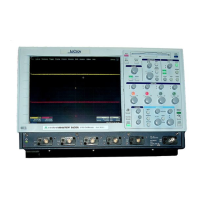
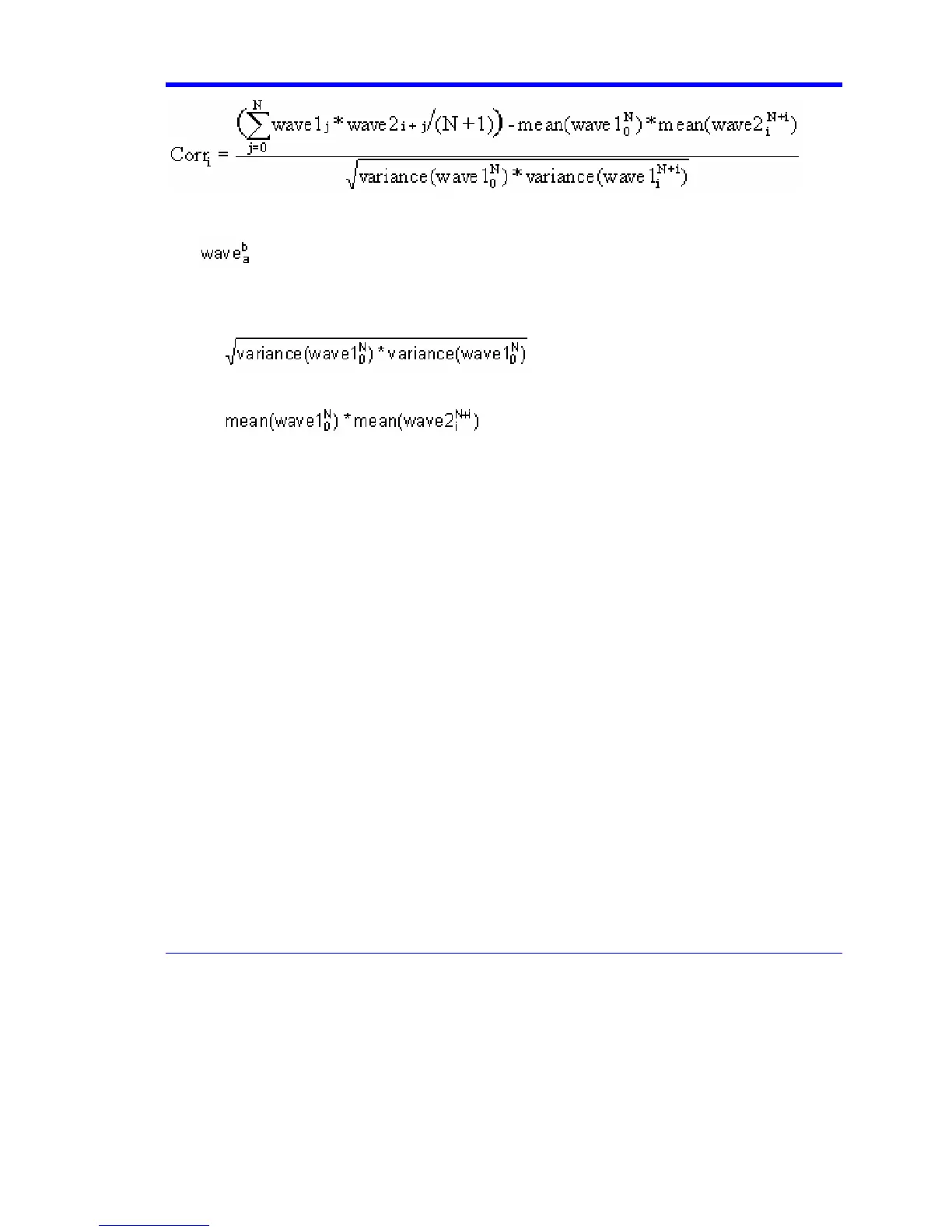